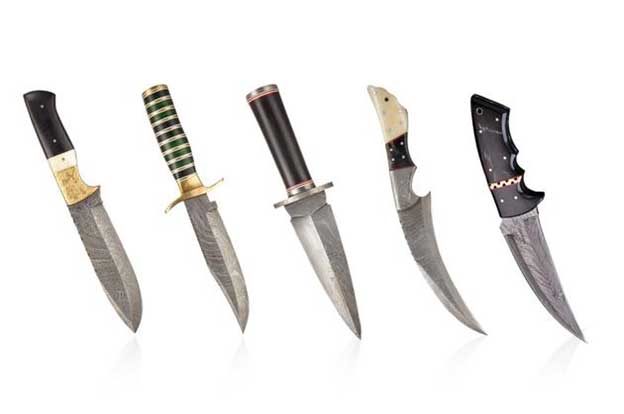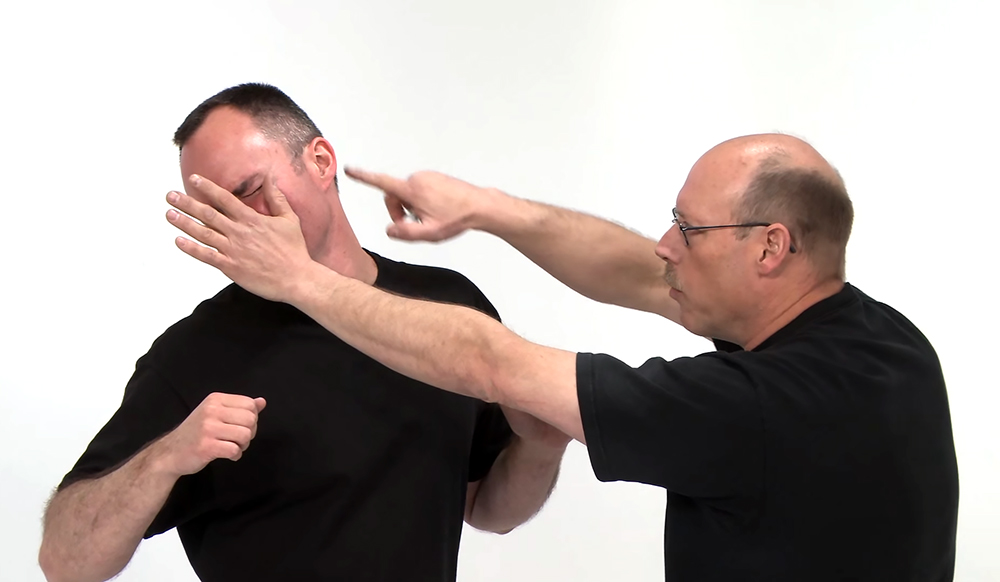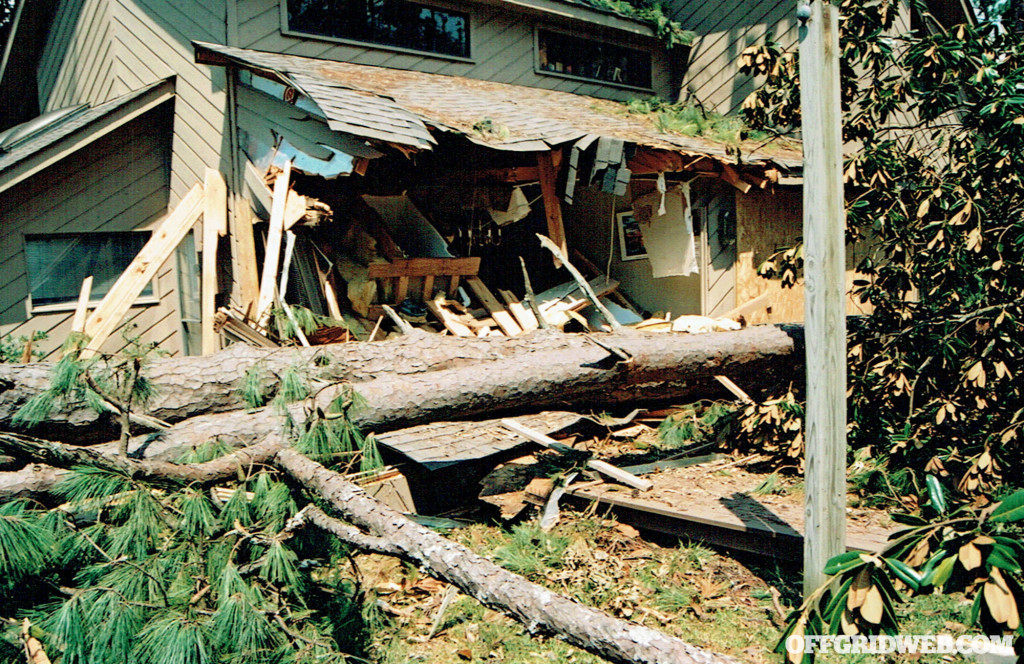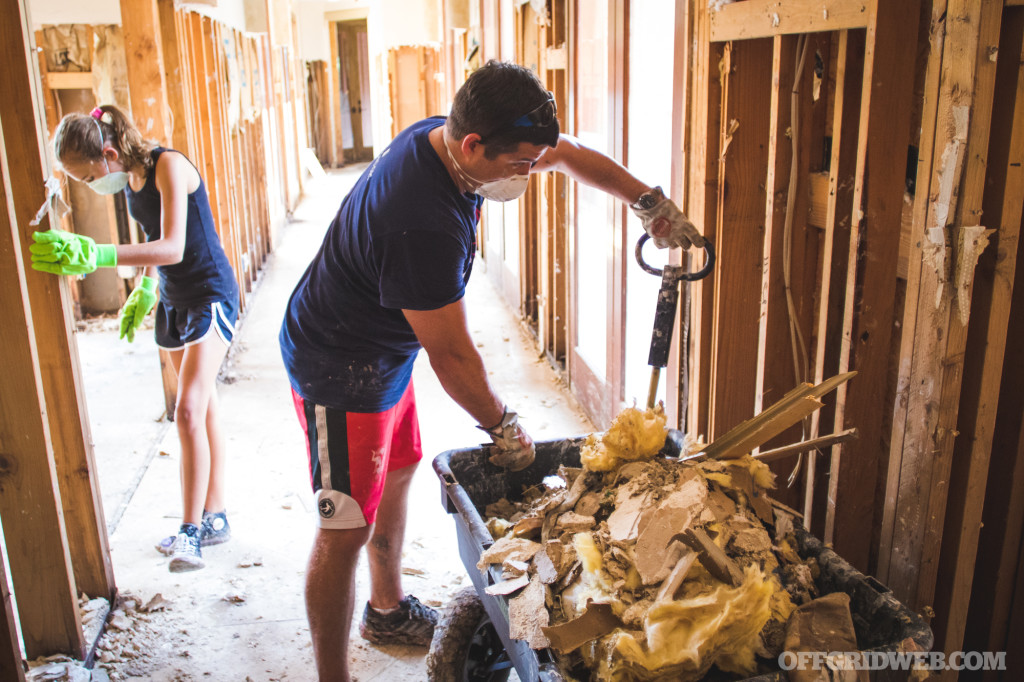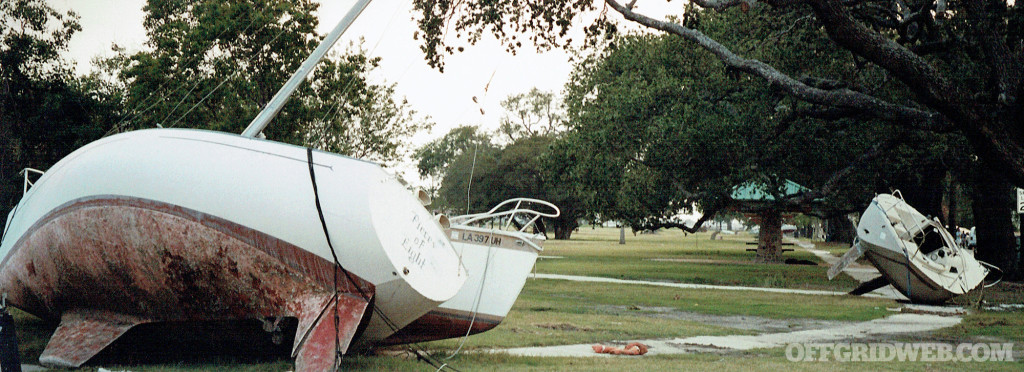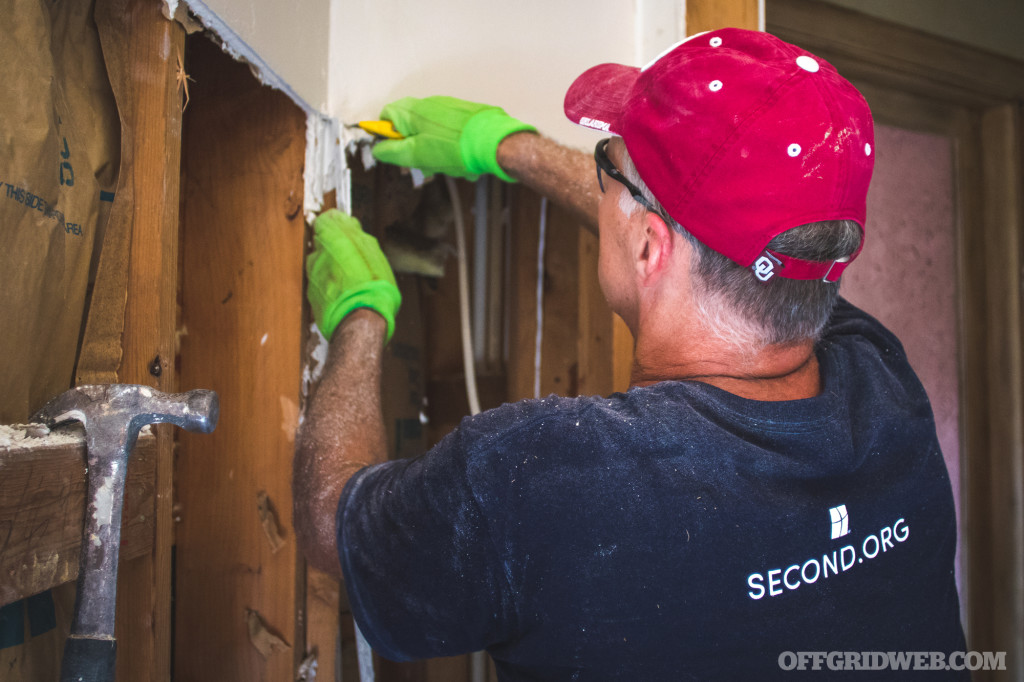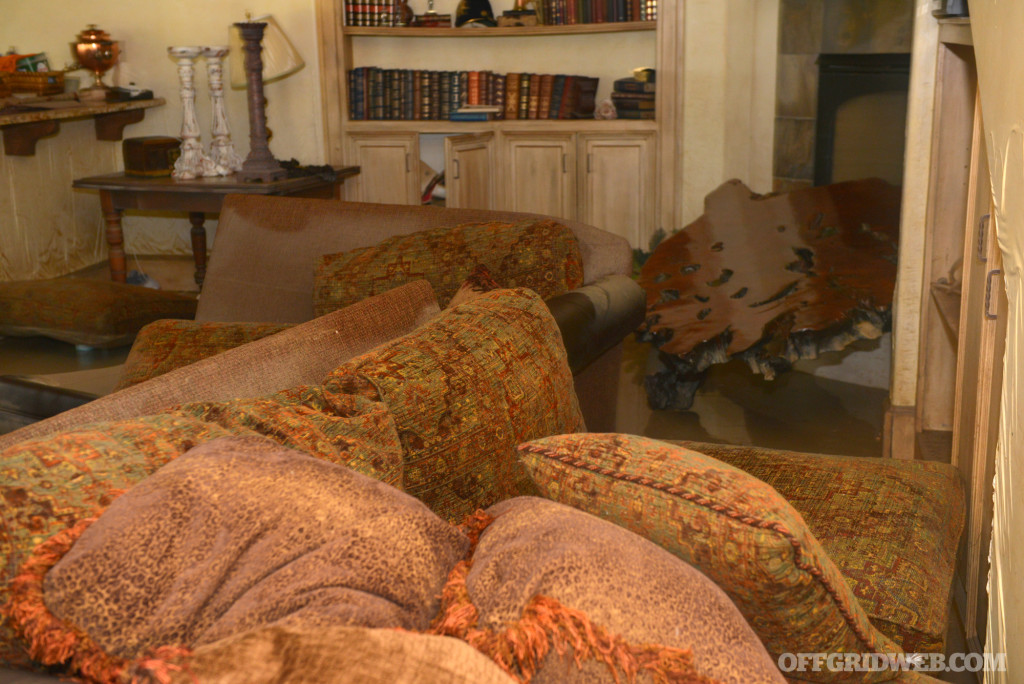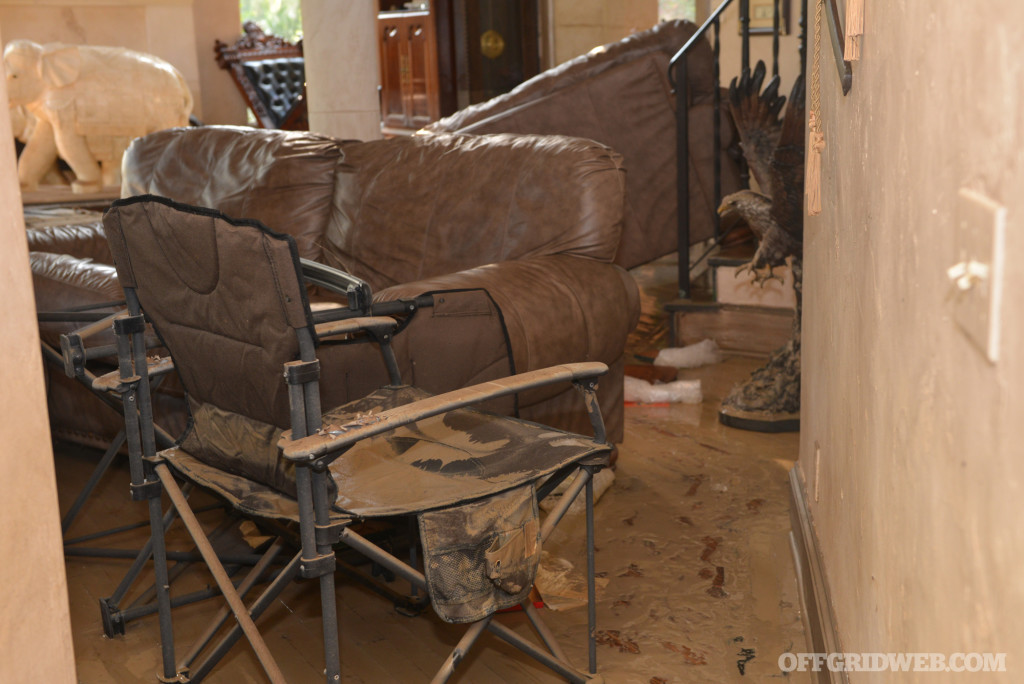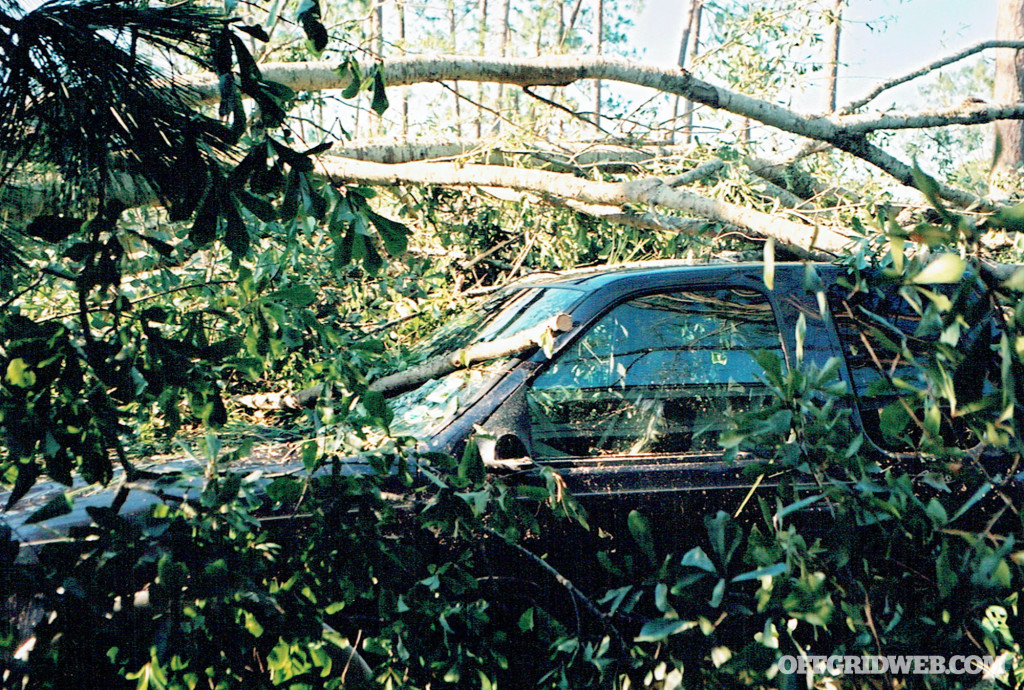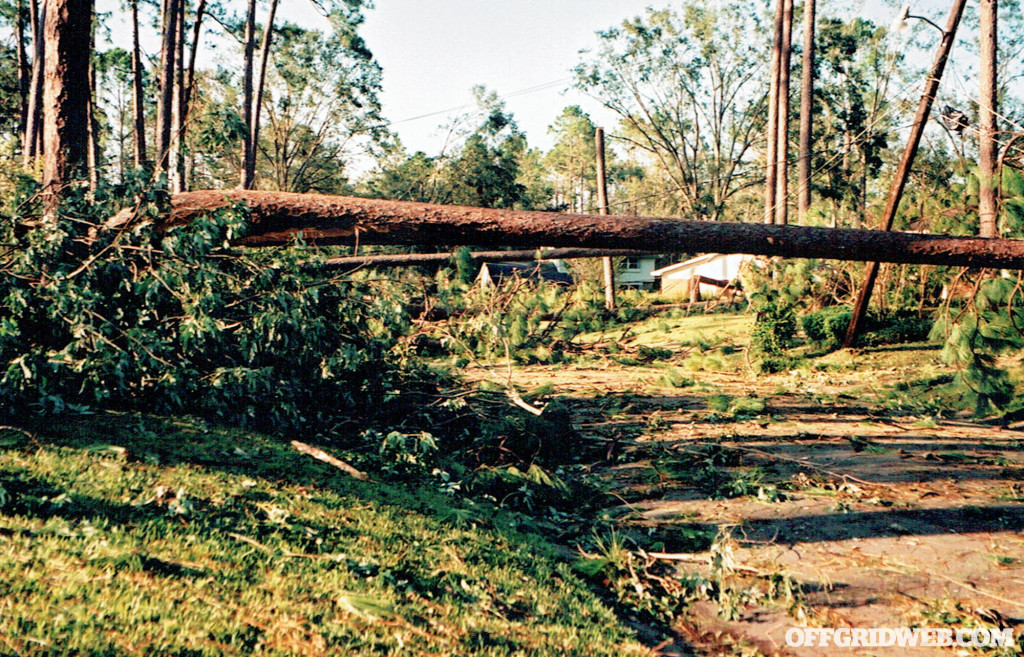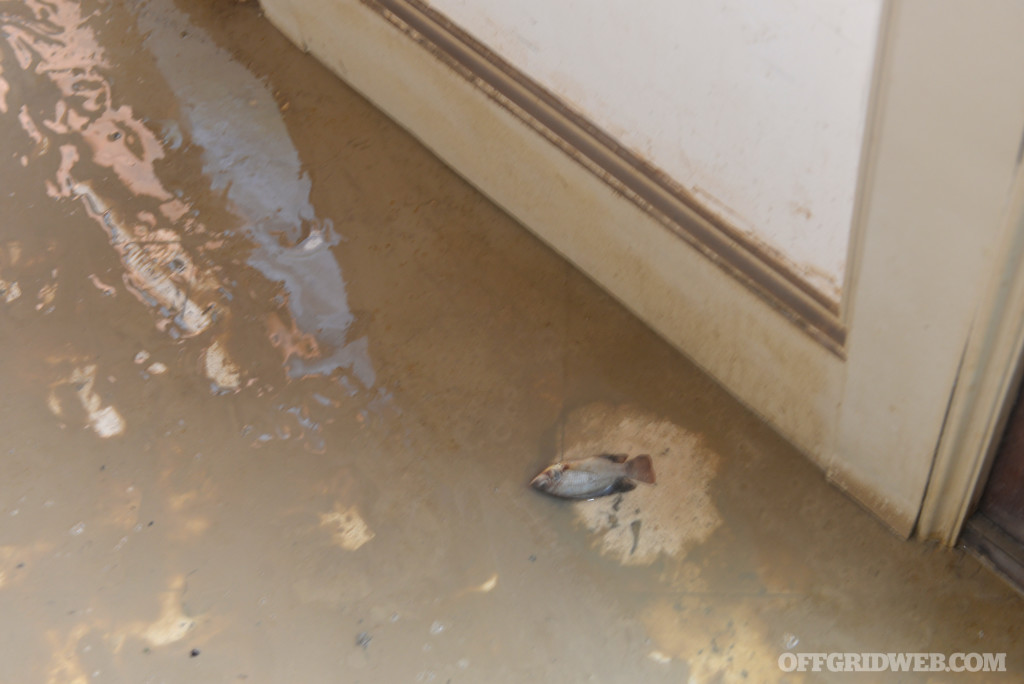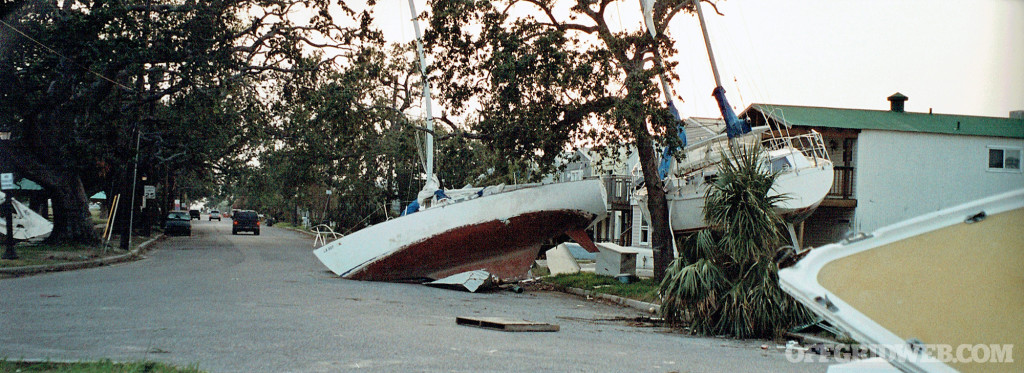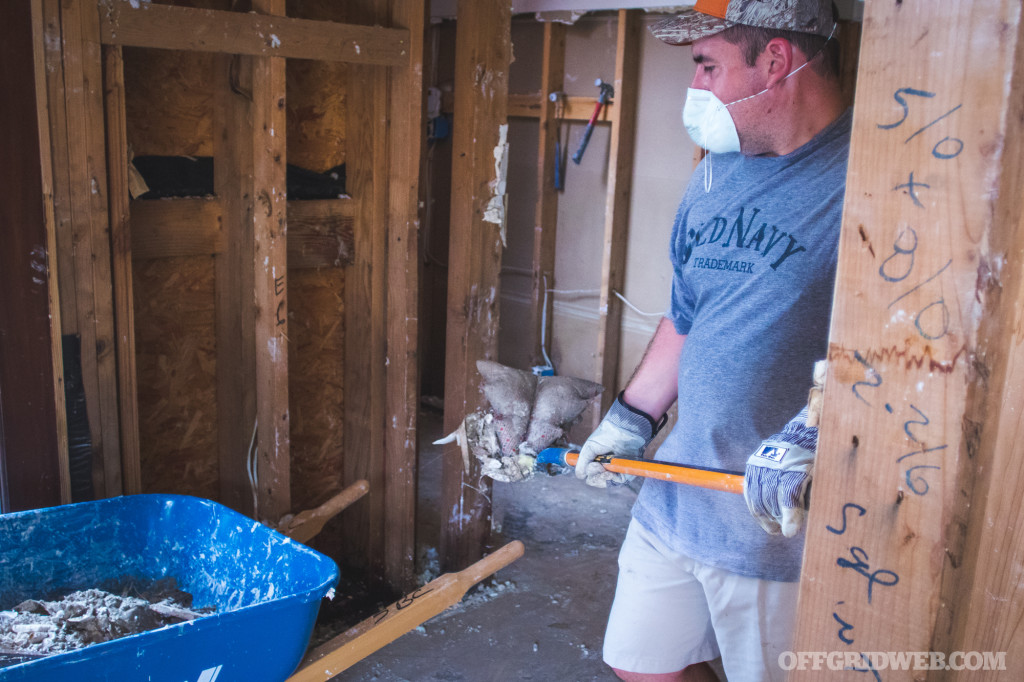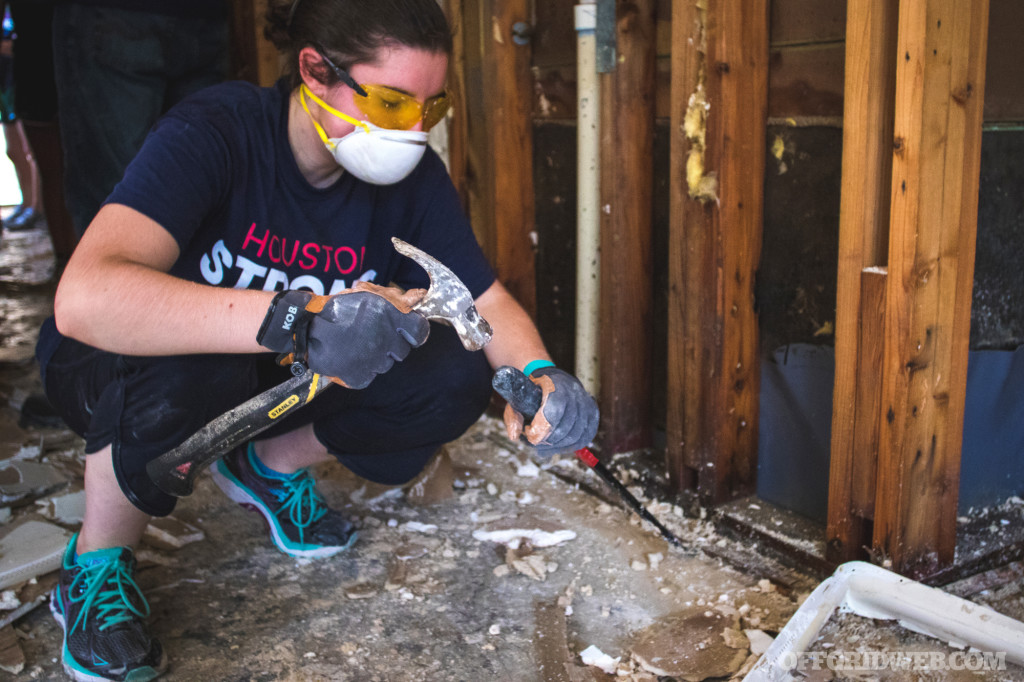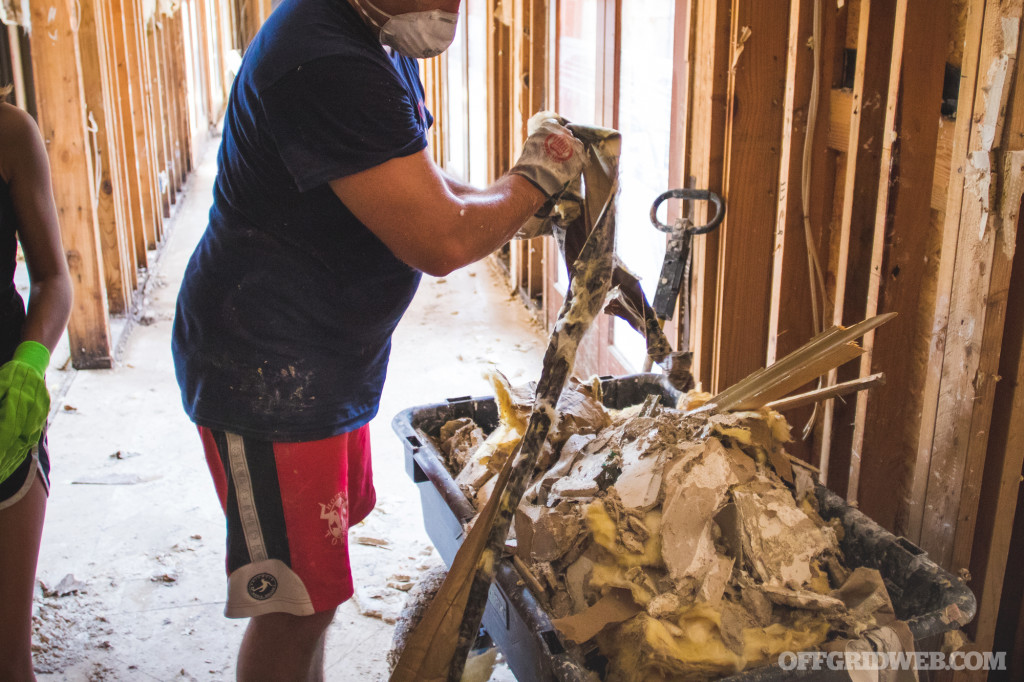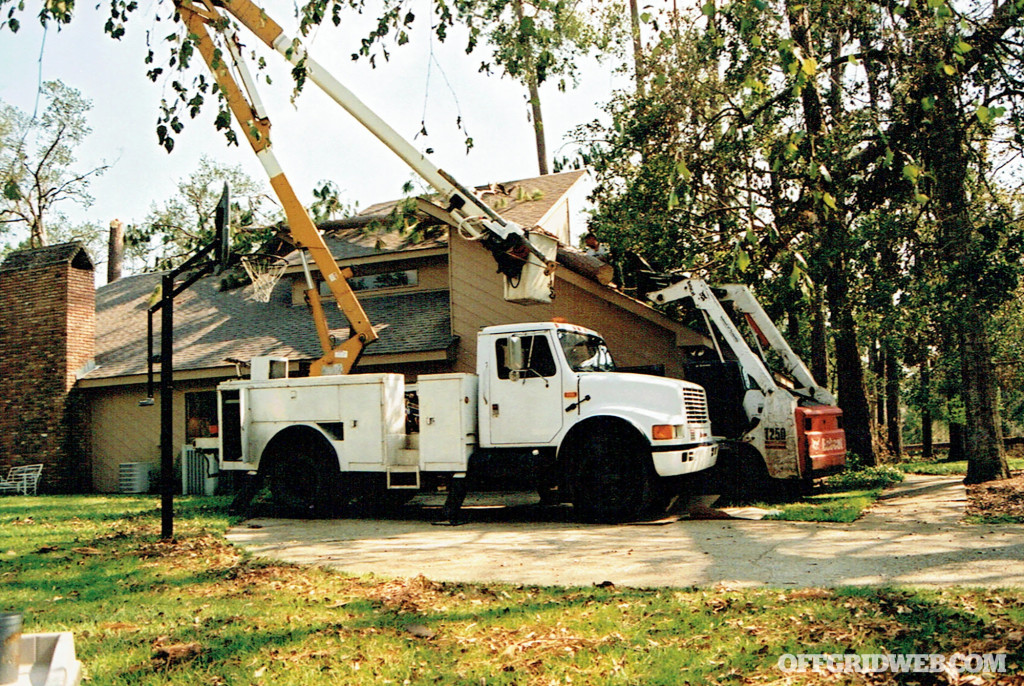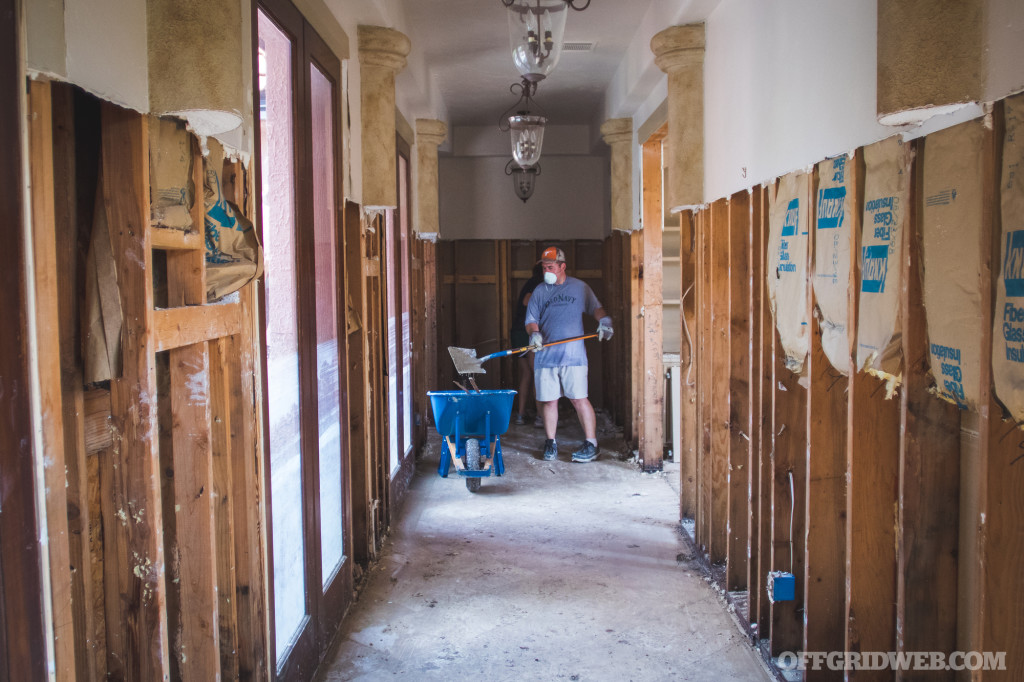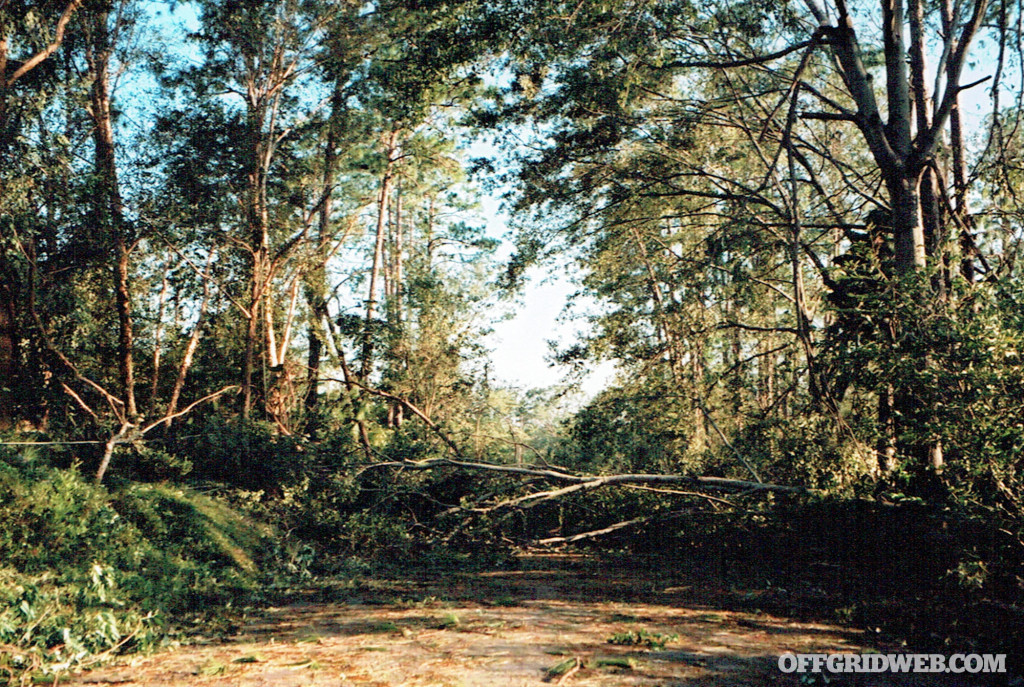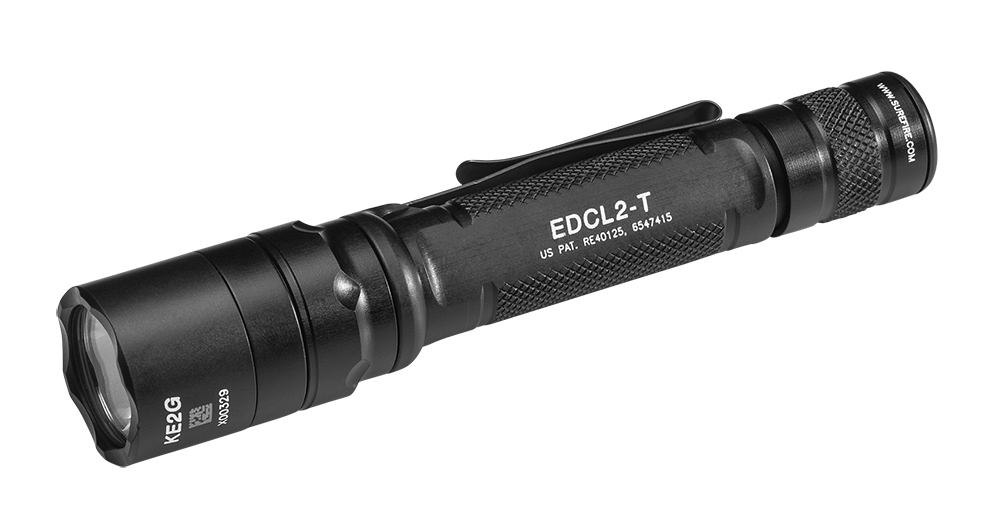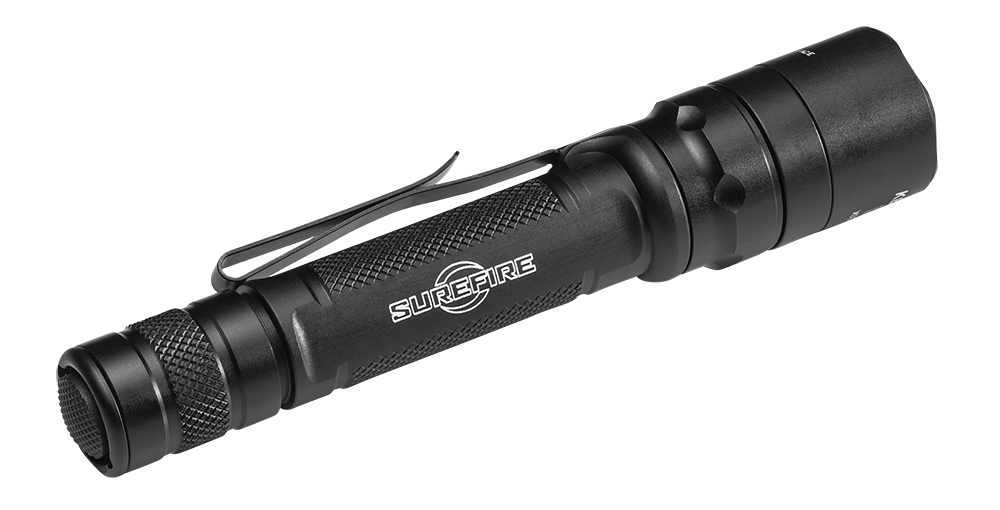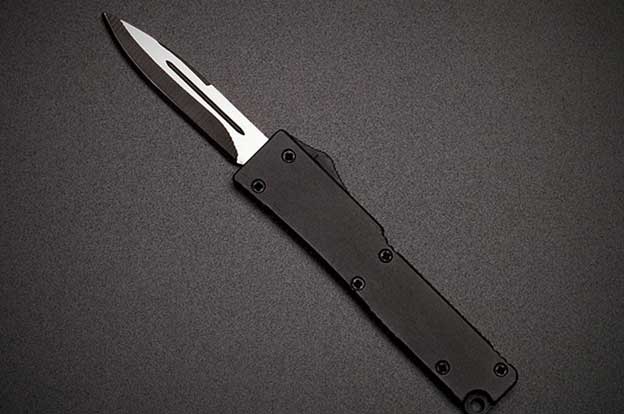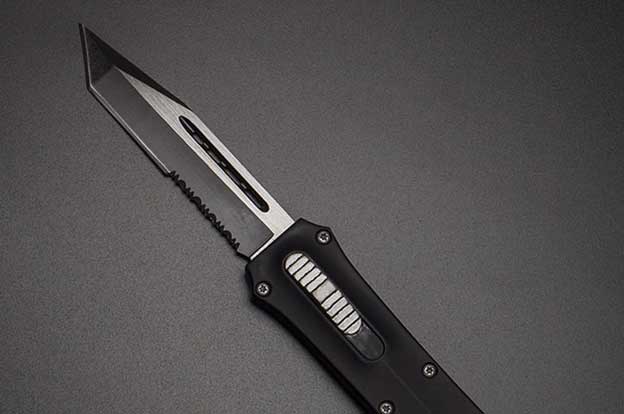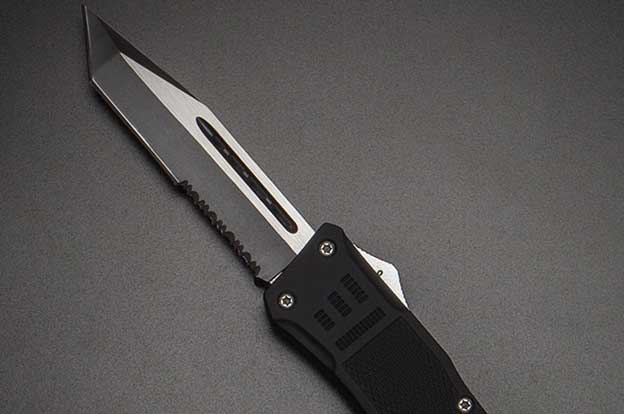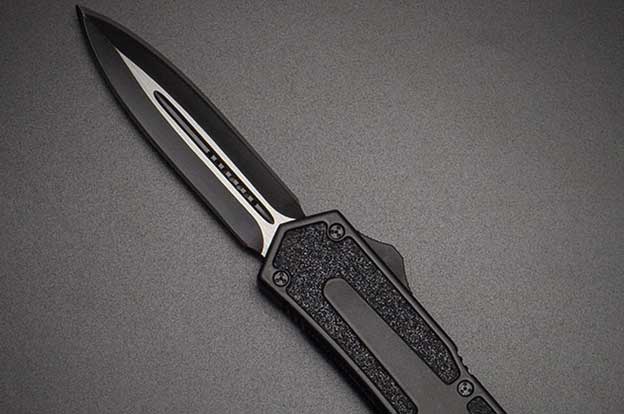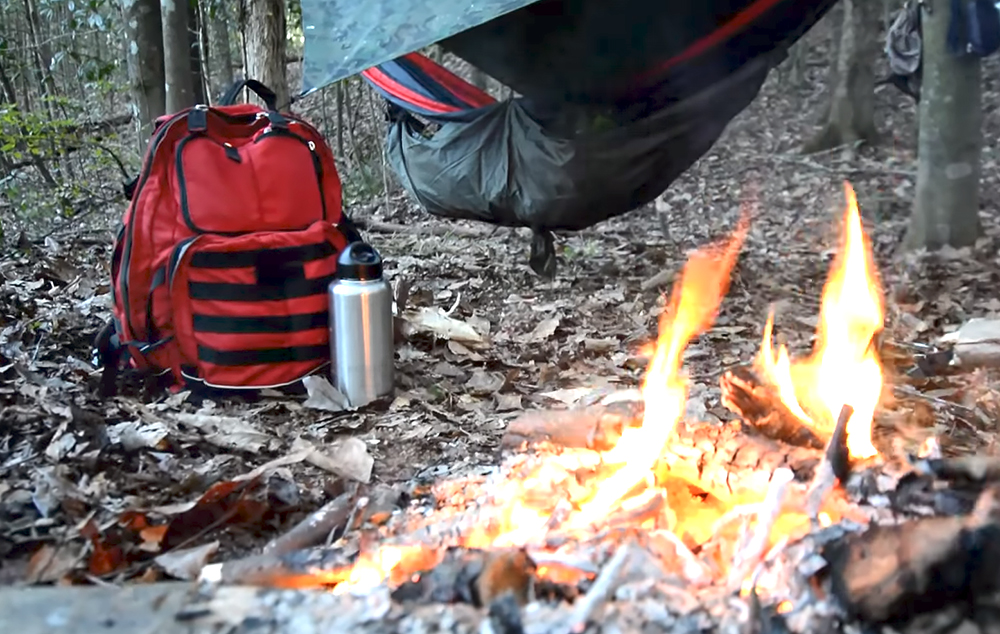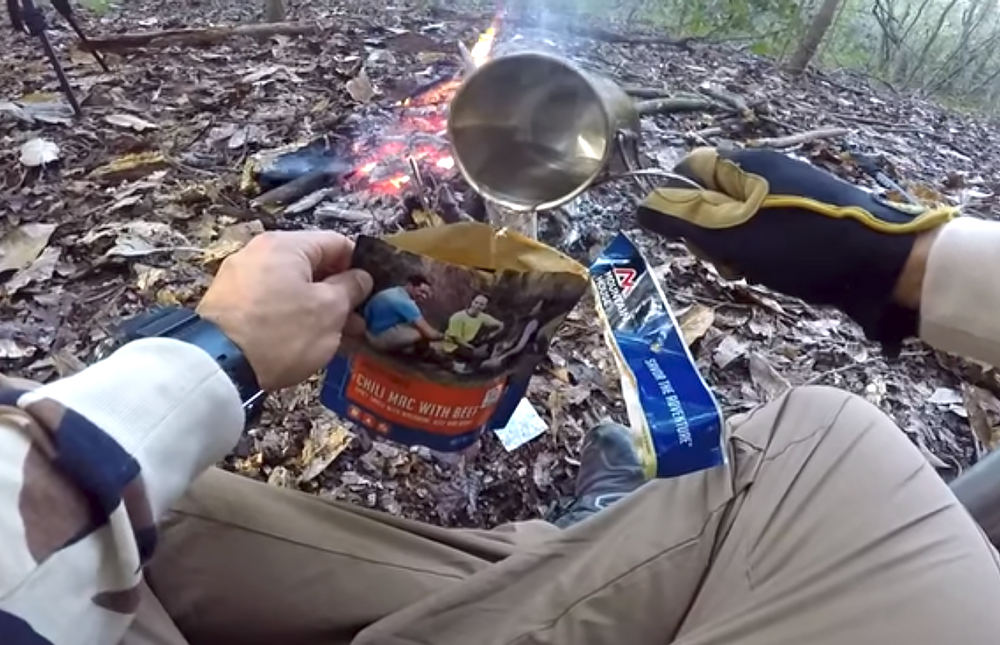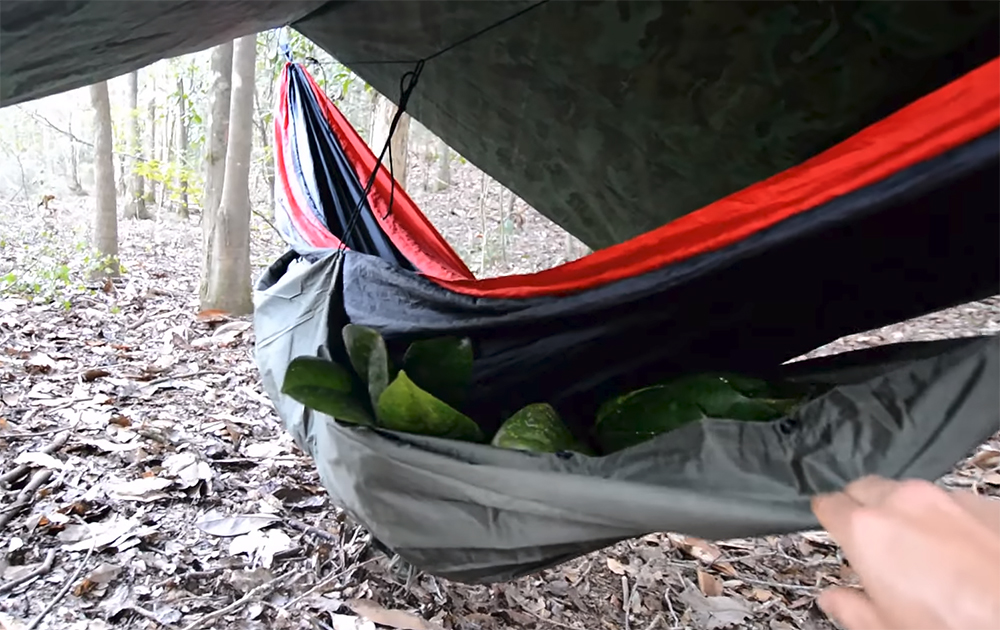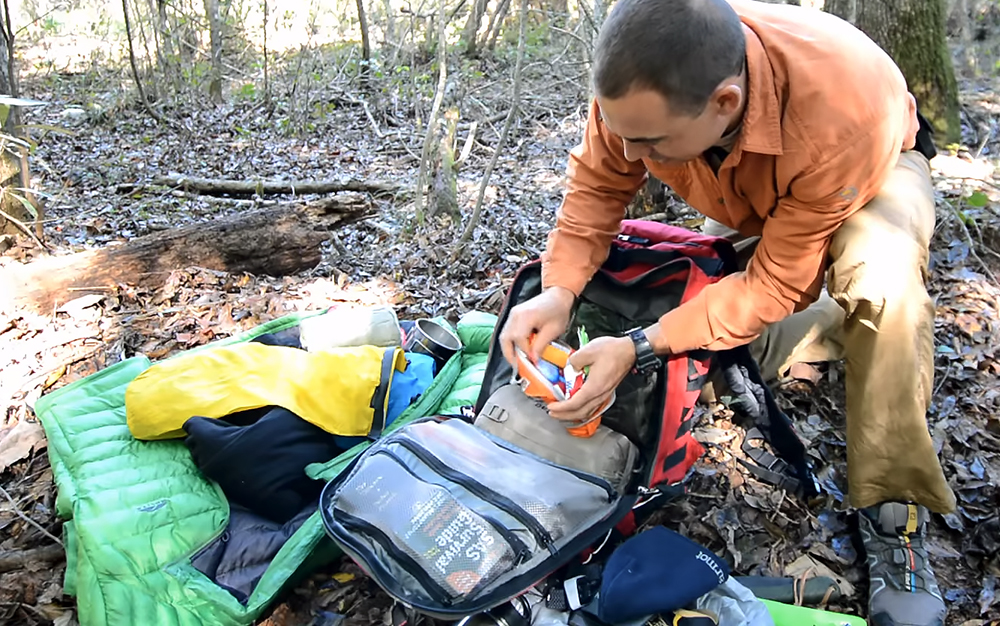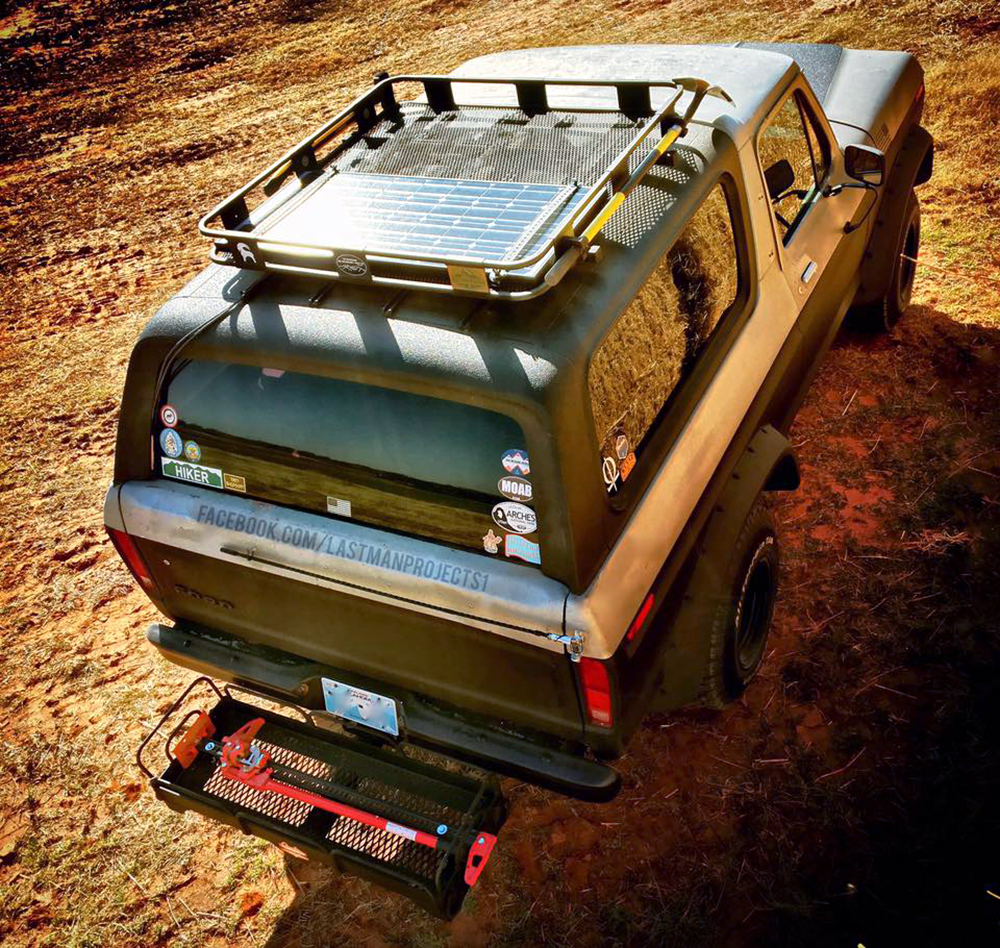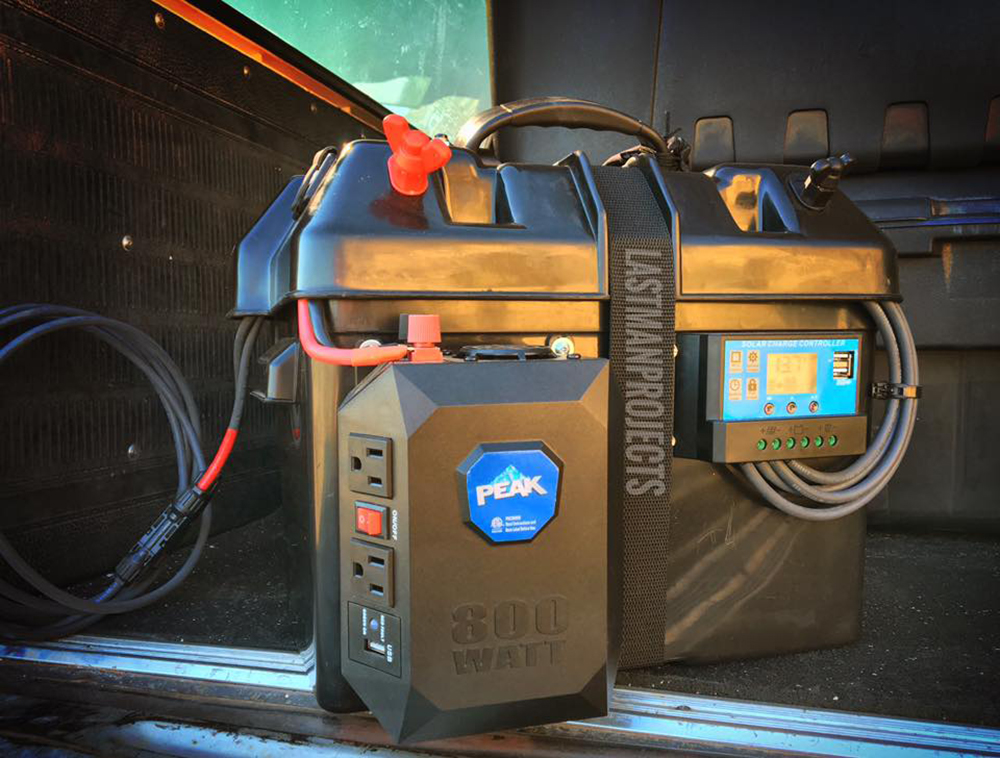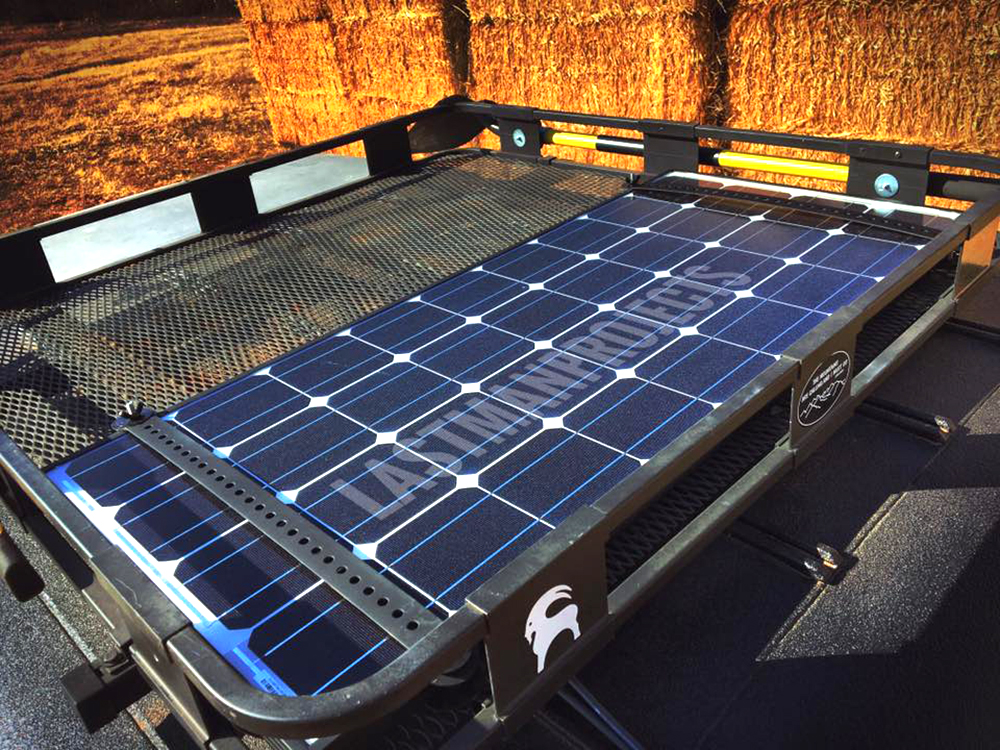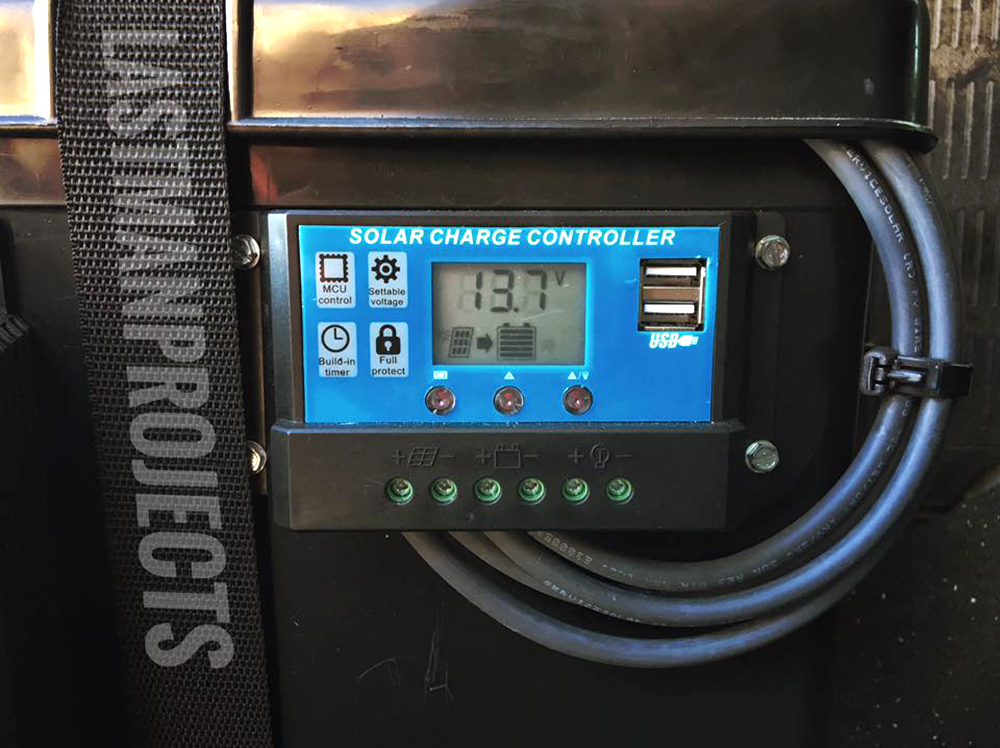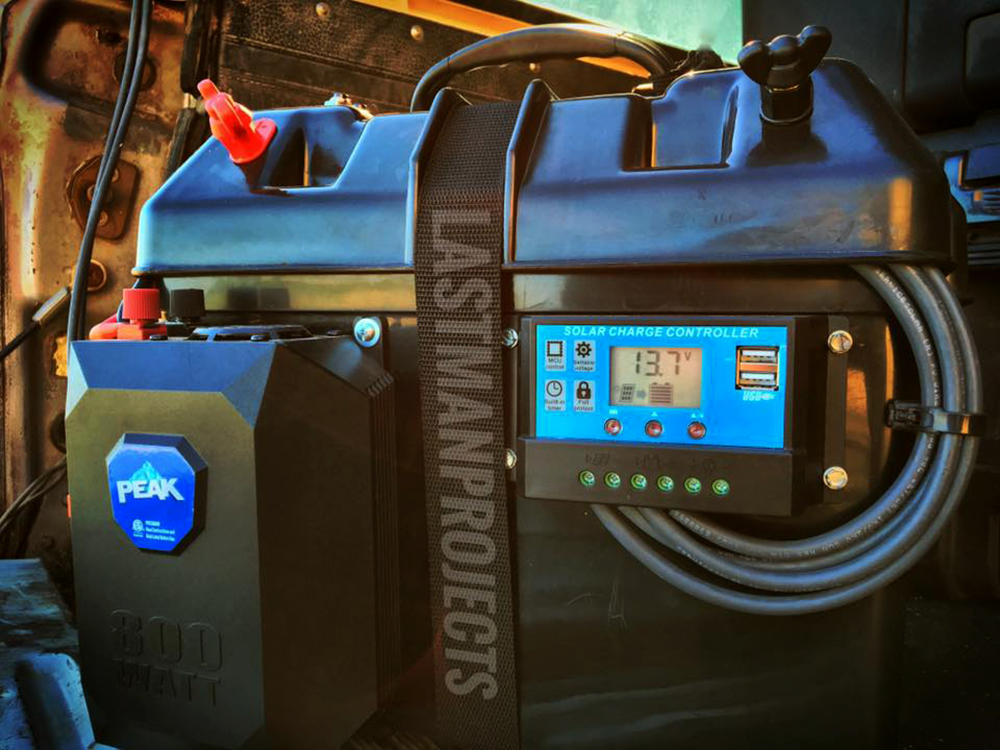Last weekend, we shared Part 1 of our 3MR event recap — check it out if you haven’t already. Today, we’ll continue to share some of the lessons learned from the Fall 2017 Modern Mountain Man Rendezvous. These include foraging for edible plants, skinning and cleaning small game animals, and trauma care for wounds or broken bones in the backcountry.

We had a great time at the event, and really appreciated the friendly and informal atmosphere. You don’t have to be a hardcore survivalist or have military experience to enjoy these courses, even though many of the instructors and attendees fell into these categories. Whole families came out and had fun learning, training, and chatting with like-minded folks around the campfire. If you’ve got a spouse or kids who are just starting to get into the outdoors, an event like this can be a wonderful bonding experience.

Without further ado, here’s part two of our recap of the 3MR courses.
Wild Edibles
Taught by Todd (a SERE instructor)
Todd returned to teach the first of a pair of courses on finding food in the wilderness. In this part of southern California, resources are more scarce than they might be in a lush forest, but edible items can still be found if you know where to look.
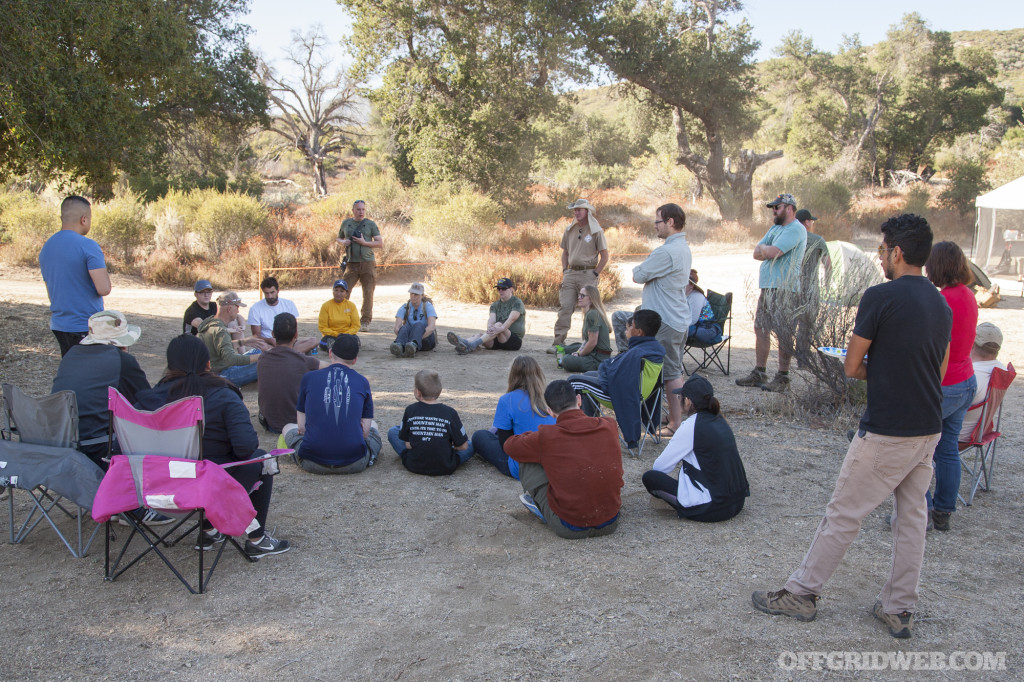
First, Todd went over the Universal Edibility Test. If you’re not familiar with this technique, check out our article to learn the step-by-step process of safely testing suspicious wild edibles.
In general, he said that the edibility of berries can be estimated based on their color. Obviously, this is not a hard and fast rule, and there are exceptions. Don’t take these sayings as gospel and chow down on some deadly nightshade or pokeberries solely based on color.
- Green, white, or grey = stay away
- Black or blue = good for you (probably)
- Red = about a 50/50 chance of being poisonous or edible, so be very careful
Todd also emphasized the importance of varying your diet — even if you find a perfect patch of juicy blackberries, you’ll soon regret it if that’s the only type of food you consume.
Walking around the campsite, he pointed out various edible plants. Sugar bush, pictured above left, is a green plant whose ironically bitter leaves are high in vitamin C.
Wild buckwheat, pictured above right, was plentiful in the area. When green, its leaves and stems can be eaten raw; the seeds and roots can be ground into flour and made into cakes. Coastal oak trees provide acorns, though these must be processed to remove the high levels of tannic acid within.

Other edibles in the area include squaw potatoes, wild onions, our Lord’s candle (a type of yucca), mustard grass, and elderberries. The elderberry plant, pictured above without berries, contains potentially dangerous levels of cyanidin glycoside. While you shouldn’t eat the leaves or stems, the ripe black berries can be eaten safely (cooking them is recommended).
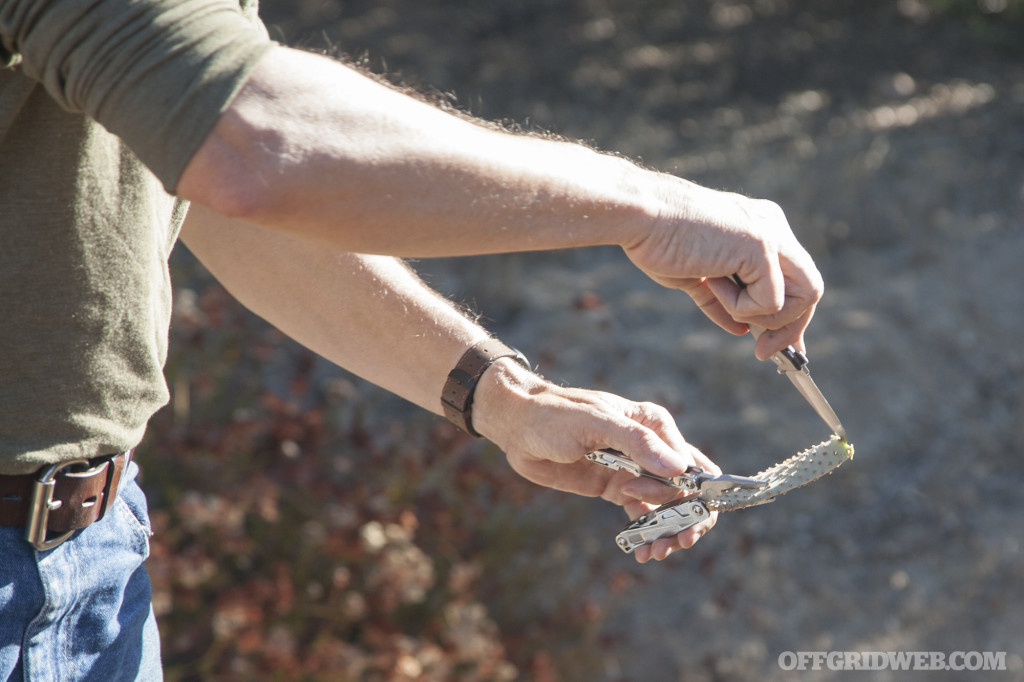
Next, Todd examined a plentiful resource in the area: cacti. The beavertail cactus (above) is one variety of prickly pear. Its flesh can be cooked and eaten after carefully scraping off all the tiny needle-like spines — this green part of the prickly pear cactus is known as nopal in Mexican cuisine.

Another part of this family of cacti gives it its name: the bright red prickly pear fruit. These fruits can be cut off the cactus and sliced open, revealing juicy seeds similar to a pomegranate.
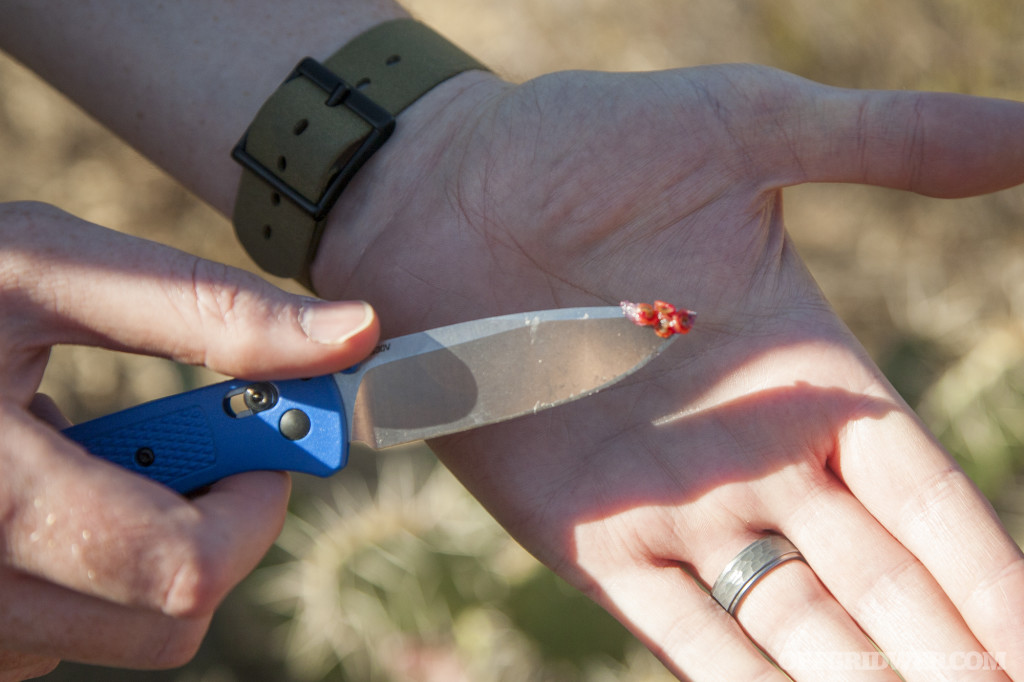
We tasted these seeds, and while the core is hard, the surrounding fruit is sweet and delicious. All cactus fruits are edible, but the prickly pear is said to be one of the best-tasting. This is at the top of our prioritized list of wild edibles in the area.
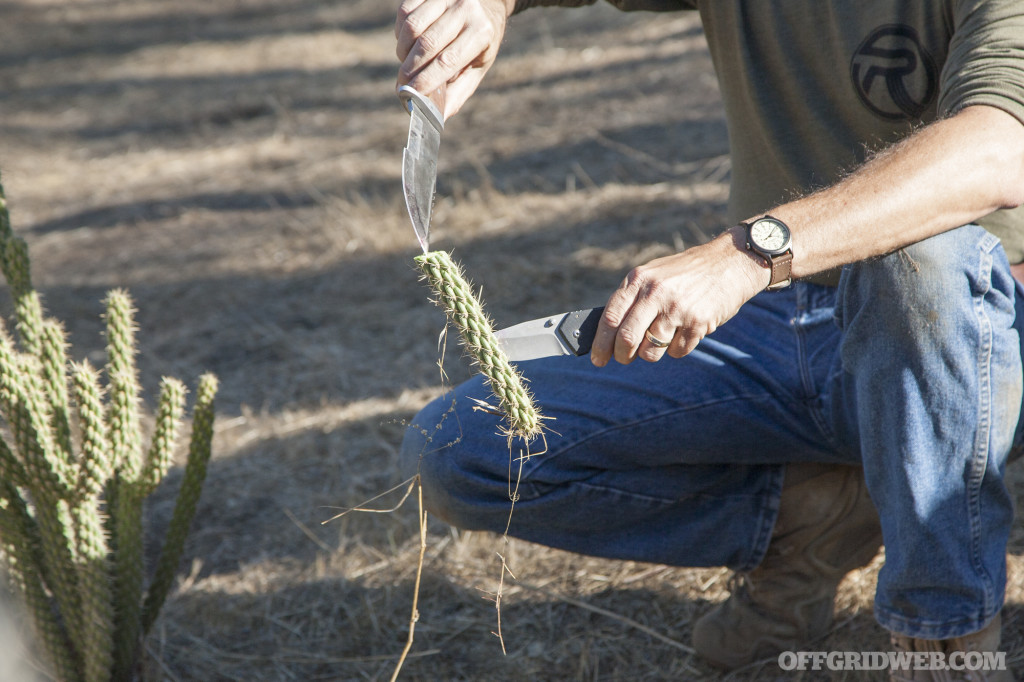
If you’re more desperate, the flesh of the jumping cholla cactus (above) is also edible. However, this plant can easily cause you excruciating pain, since its sharp spines cause its stems to “jump” off the plant and attach to your skin or clothing. Approach and remove spines with caution.

One last point about cacti: don’t drink cactus water. The plants do not contain large reservoirs of clear water like you may have seen in old western movies, and any water you’re able to squeeze out may contain high levels of tannic acid or other toxins. Small quantities of this liquid in the flesh may be palatable, but drinking large amounts directly can cause diarrhea or vomiting.
Killing & Processing Small Game
Taught by Todd
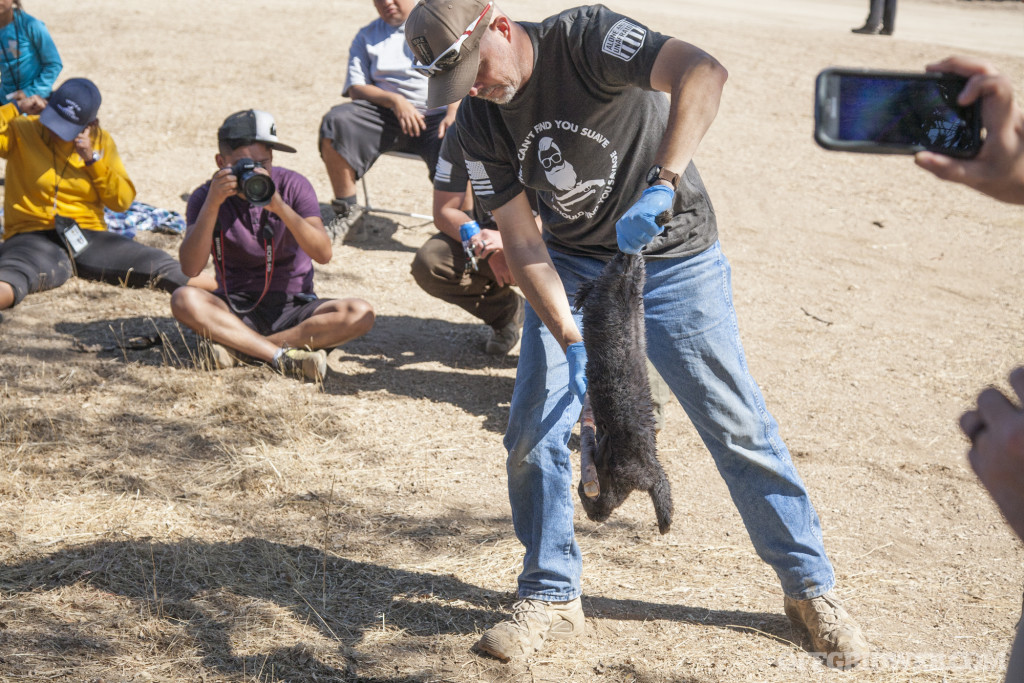
For the second portion of the food course, Todd discussed the basics of catching small game. Purpose-built locking cable snares are preferable, but improvised snares can also be constructed in a pinch. Once you’ve trapped an animal, however, it’s important to know how to break it down and use each part to aid your survival. So, this was the primary focus of the lesson.
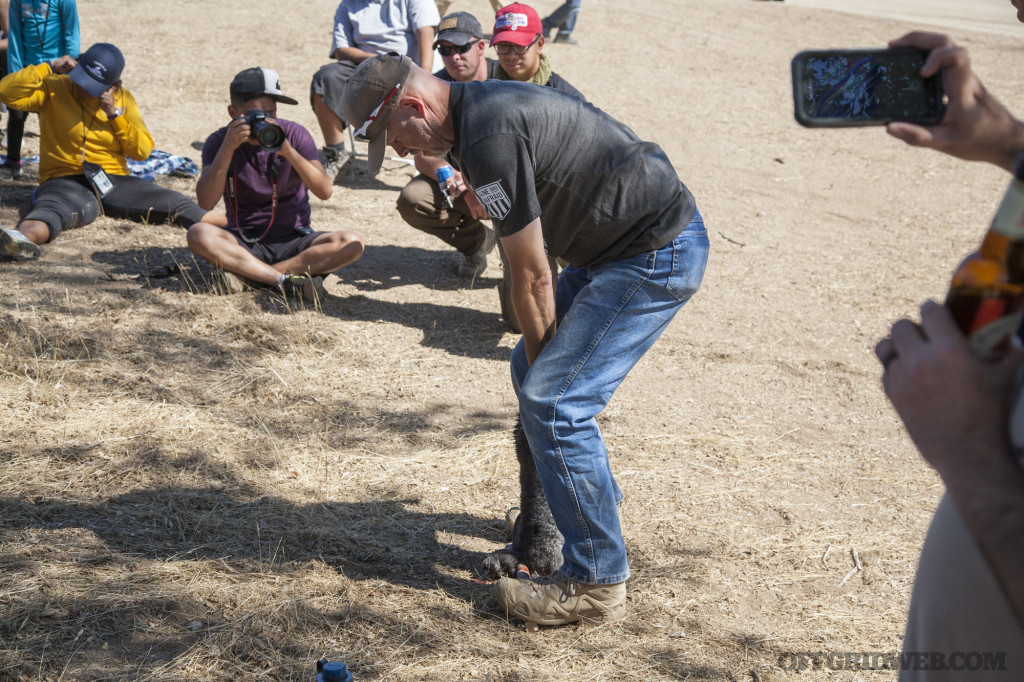
Todd had obtained two rabbits from a local breeder. These animals were bred specifically for their meat, and we’d be learning how to use it. It’s worth noting that wild rabbits should be inspected for tularemia, an infectious disease that will cause the animal to look sick with mangy, matted fur. If these signs are present, don’t take a chance by eating the animal.
The following task isn’t for the faint of heart: humanely killing the first fuzzy bunny. In a survival situation, you do what you must to put food on the table, so it was time to swiftly deal a killing blow. Todd struck the back of the head with a stick to stun the animal, then pinned the neck to the ground with the stick (pictured above). He rapidly pulled the legs upward to sever the spine with an audible crack.

In order to ensure the animal was dead and would feel no pain, he pulled the neck to confirm it was fully broken. Now it was time to begin skinning the rabbit.
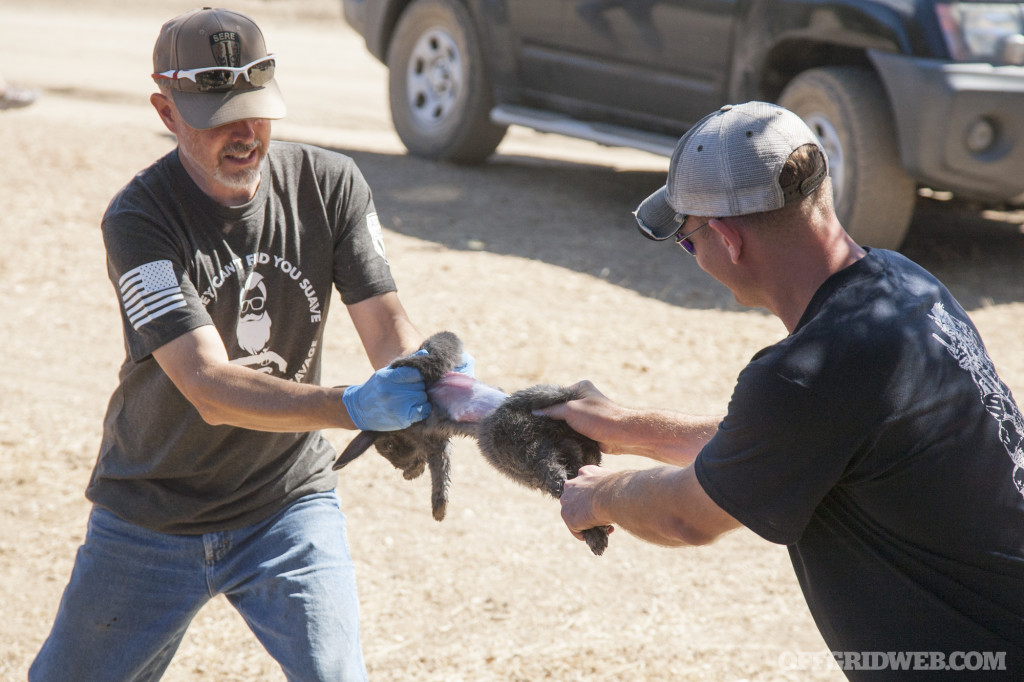
Many methods of skinning exist — as the saying goes, there’s more than one way to skin a cat. Rabbits are no different. Todd used an incision on the back, and began pulling the skin apart towards the front and rear. The head was cut off, and additional cuts were made around the paws to fully remove the skin. This method is quick, but doesn’t keep the pelt in one piece.
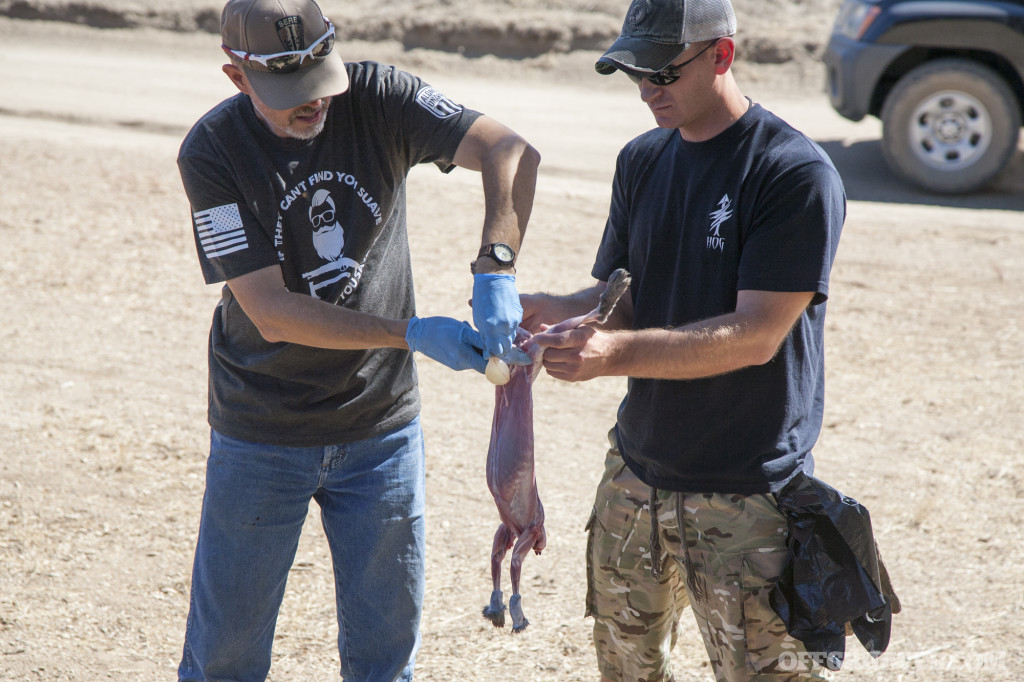
The skinned rabbit’s body cavity was cut open to begin removing the guts and organs.
The bladder, pictured above, was very full on this particular rabbit. The urine inside can be used to tan and preserve the hide. Todd demonstrated an improvised use of another organ: the bunny’s lungs. Simply blowing into the trachea fills them with air, allowing them to function as a float or bobber for fishing.
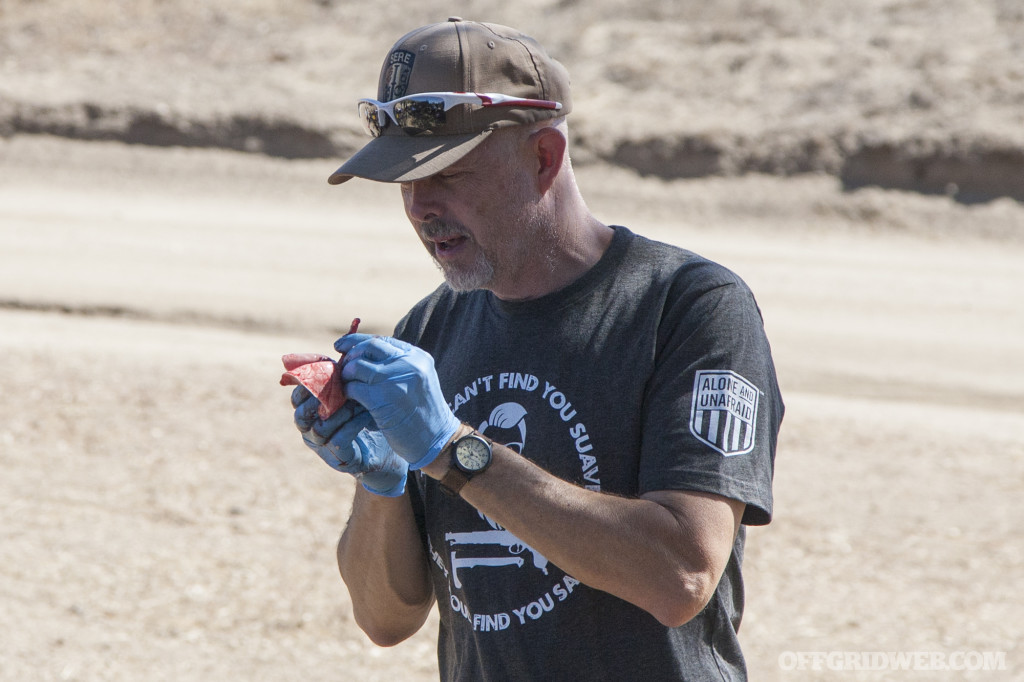
The feet, tail, and area around the animal’s anus should be cut away and discarded, as they are likely to contain more bacteria. The remaining parts of the bunny can be used as follows:
- Brain – cook and eat (it’s full of protein)
- Eyes – edible raw
- Ears – with slits cut in the center, these can be fashioned into rudimentary blinders to protect your eyes from the sun
- Intestines – use as bait for traps or fishing
- Kidneys – boil and eat
- Liver – Inspect for white spots (a sign of illness). If none are present and it’s a normal dark red color, it can be cooked and eaten.
- Gall bladder – remove from liver and discard
- Bones and ribcage – break and cook with other food to extract nutritious marrow
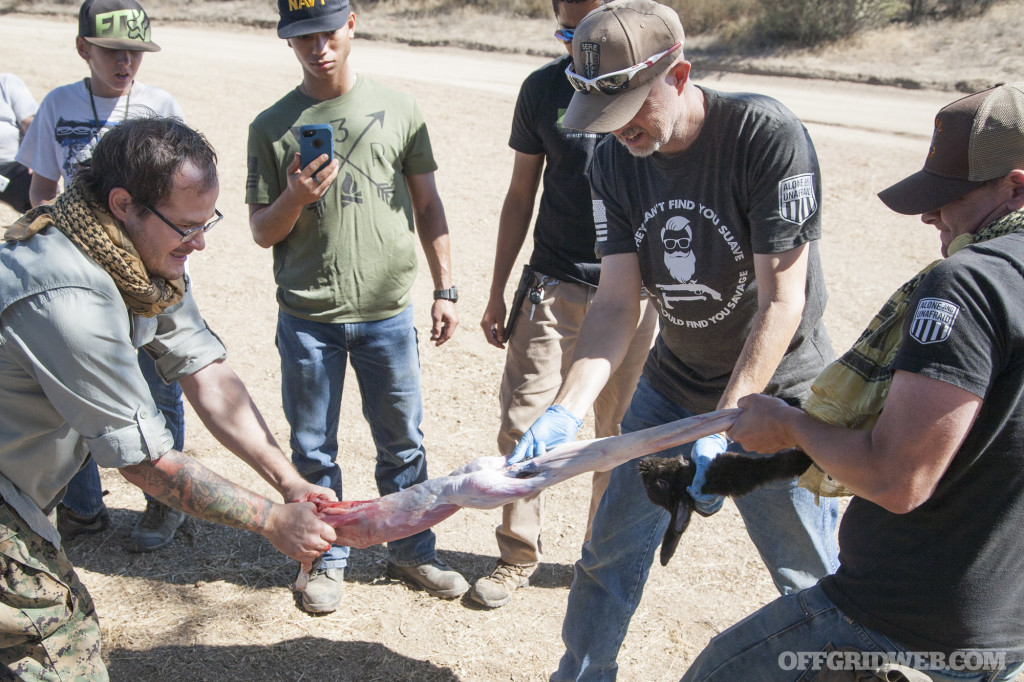
The second rabbit was brought out, and students stepped up to replicate the procedure Todd just demonstrated. The rabbit was killed and broken down, and both animals’ meat was put into a stew for dinner that night. All parts of these animals were put to good use.
Of course, if you’re looking for an easier way to enjoy some meat while camping, check out our previous article on the 3MR demo that showed how to make bacon and eggs in a paper bag.
Wilderness Medicine & Trauma Care
Taught by Austin (an EMT, pictured at right) with assistance from Raul (center, black shirt) and Pete (left)

First, Austin went over some of the gear in his wilderness first aid kit. As an EMT, his list was more extensive than you might expect to find in an ordinary hiker’s pack, but it covers most injuries that could occur. The pack included countless rolls of medical tape, hemostatic gauze, Dynarex compression wrap, Kerlix rolled gauze bandages, Telfa pads for smaller wounds, and a variety of other items for treating small wounds.
In case of broken bones, a flexible SAM splint was also in the pack. Raul held it in place on his arm, while Pete tied some cloth into a sling. Austin noted that the SAM splints are radiolucent so they don’t interfere with X-ray machines — good to know, since it means you won’t need to remove it once you reach a hospital for diagnosis.
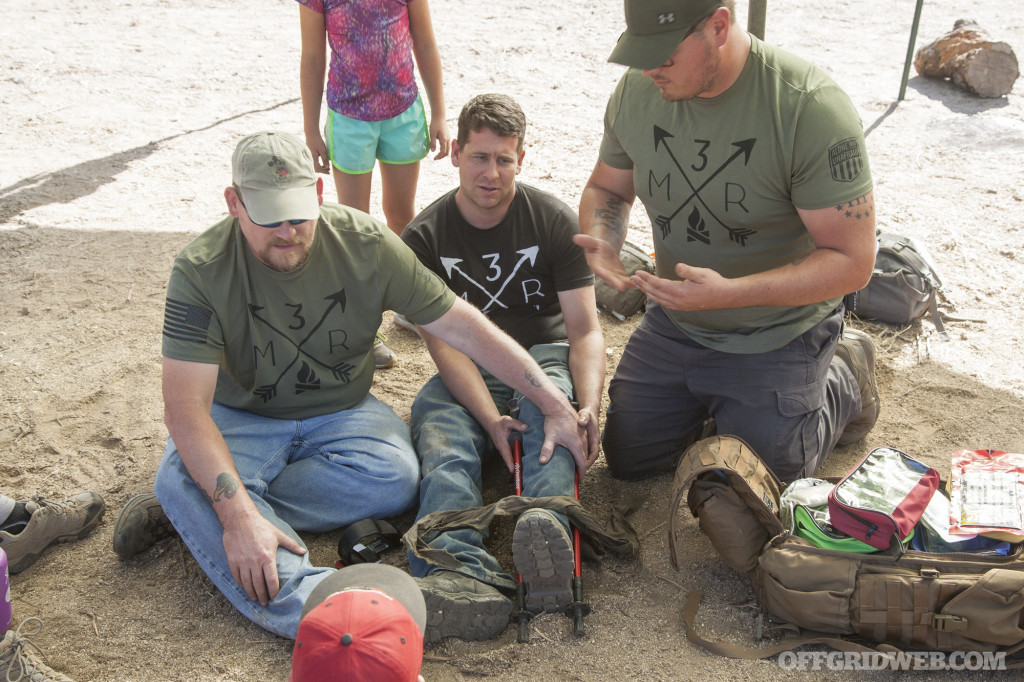
In cases where a SAM splint is too small or unavailable, an improvised splint can be made with trekking poles. The poles are placed alongside the bone, and tied firmly around it with strips of cloth.
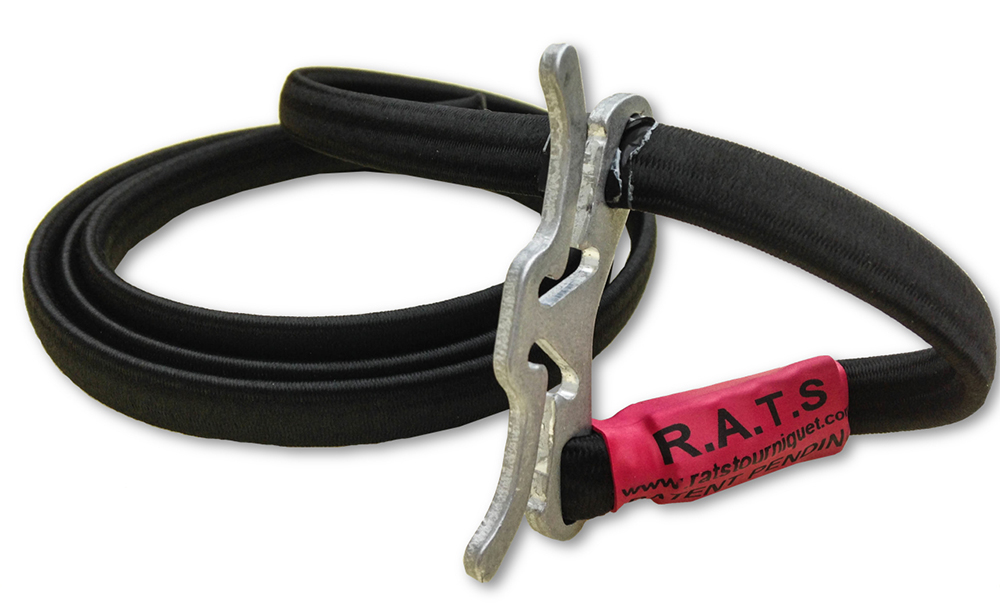
For major injuries, sudden blood loss poses an immediate threat. A tourniquet can stop the flow and spell the difference between life and death. Austin carries a RATS tourniquet, a compact TQ that uses a metal locking mechanism and nylon-coated rubber strap. However, he also showed how to use the more conventional CAT (Combat Application Tourniquet) and how to fashion an improvised TQ.

Pete applied the CAT to Raul’s right arm, cinching the strap and twisting the windlass to apply pressure above the imaginary wound. The windlass rod on the CAT locks into a plastic notch, and there’s a blank area where the user can write the time of application.
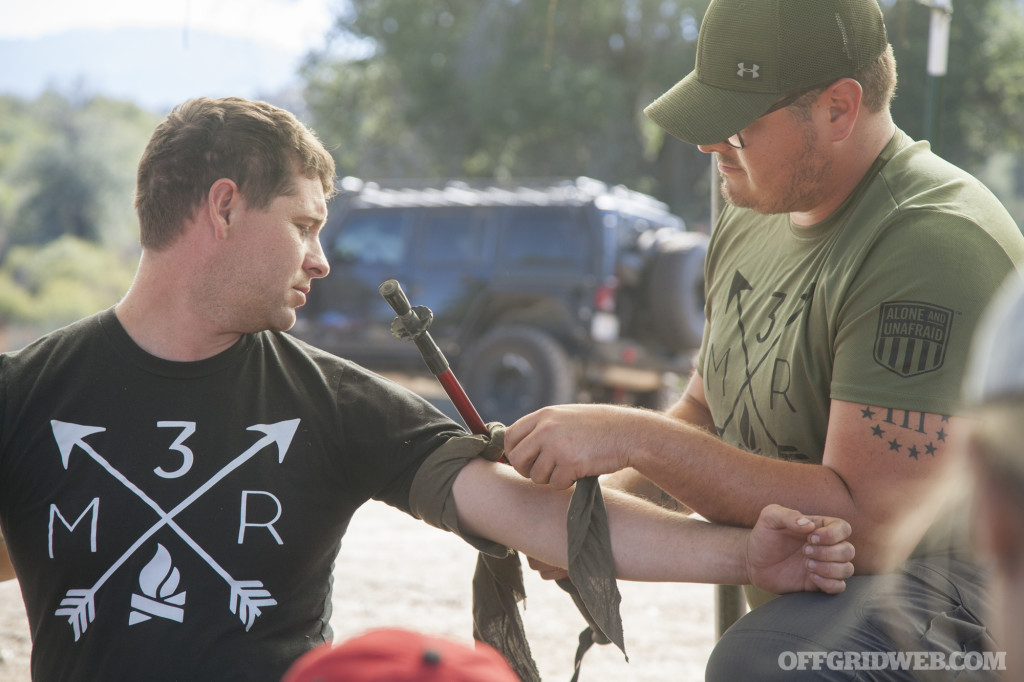
On Raul’s other arm, Austin used a cloth tied to a trekking pole for an improvised tourniquet. Twisting the pole tightened the cloth, and it was locked in place with a carabiner attached to the pole’s wrist strap. This setup isn’t as precise or effective as a purpose-built TQ, but it’s better than nothing if a patient is going to bleed out.
Austin also noted to always write down the time the tourniquet is applied, even if it’s on the victim’s forehead with his or her own blood.

While tight tourniquets aren’t exactly comfortable, Raul was a good sport throughout the demo.
That wraps up our coverage of the Fall 2017 3MR survival training event. For details on future Triple B Adventures events in California, go to 3MR.vet or follow the Modern Mountain Man Rendezvous page on Facebook.

